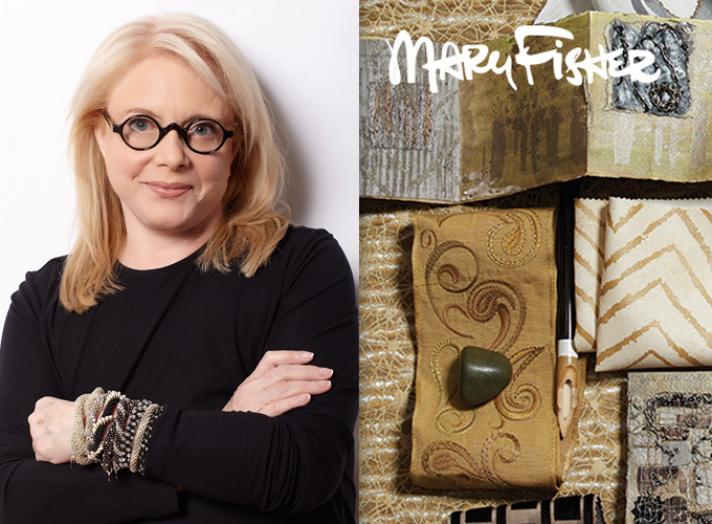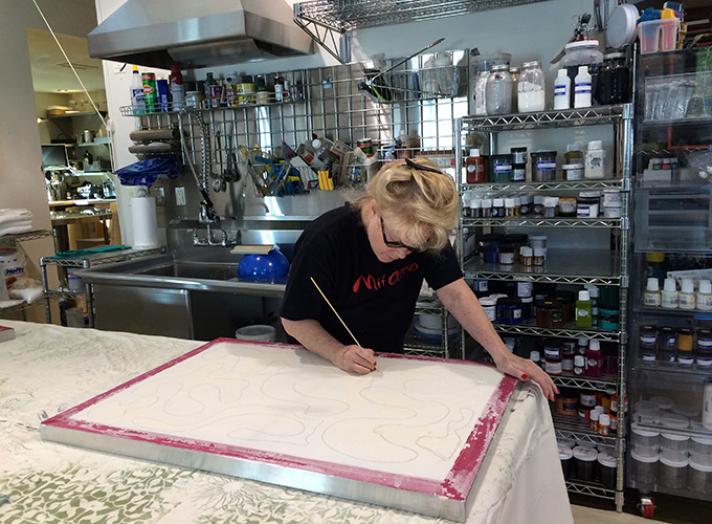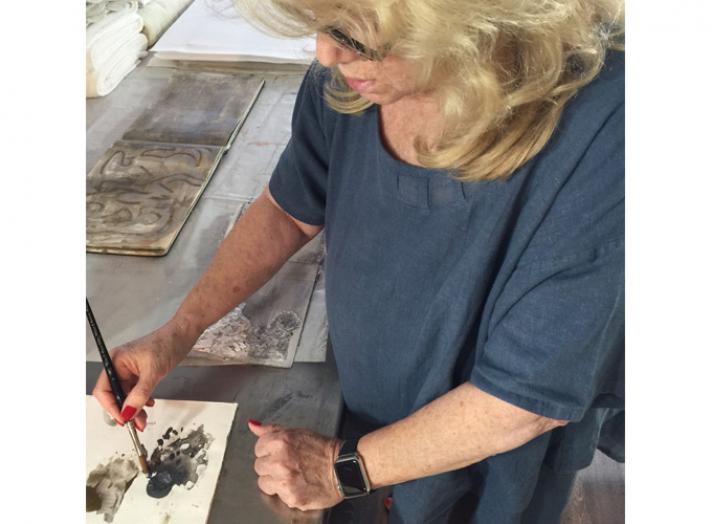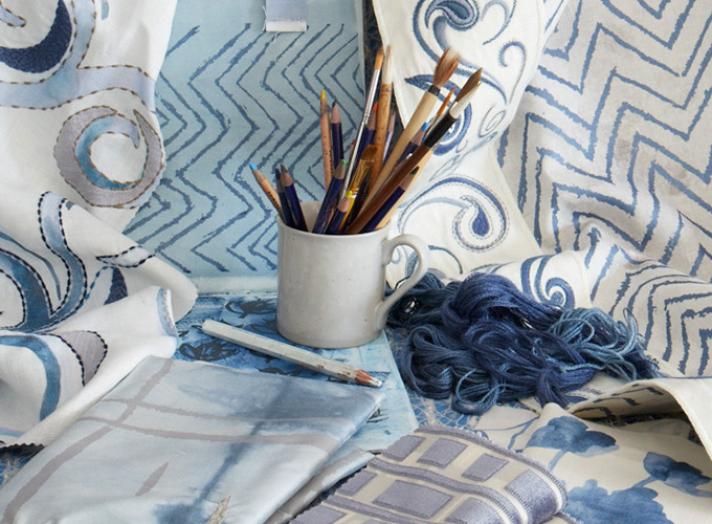She’s a shade under 5 feet tall, but Mary Fisher is a titan when standing up to injustice and intolerance. The daughter of metro Detroit philanthropists Max and Marjorie Fisher, she attracted international notice when she spoke at the 1992 Republican Convention in Houston, where she acknowledged she was HIV positive and pleaded with her party to be more compassionate toward those suffering from AIDS.
Her speech was brief but eloquent, and such lines as “I am one with the lonely gay man sheltering a flickering candle from the cold wind of his family’s rejection” gently commanded attention.
Today, Fisher continues her battle against AIDS, but her activism has extended to other ventures. Fisher, a painter, sculptor, and textile artist, has wedded her love of art with activism. For several years, vulnerable women in Africa have made jewelry based on her designs and then sold their creations. Sales of her 100 Good Deeds bracelets (available at 100gooddeeds.org and macys.com) have empowered other women – many of whom are HIV positive – in Africa, Haiti, Bali, India, and New York.
Fisher, who serves as chair of the Max M. and Marjorie S. Fisher Foundation, attended the former Kingswood School Cranbrook for Girls and the University of Michigan, then worked for President Gerald R. Ford. She divides her time between Palm Beach, Fla., and New York, but often comes back to metro Detroit.
She did so recently, where she addressed the Variety Table Tops Luncheon at West Bloomfield’s Pine Lake Country Club April 27. The next day, she spoke at the Kravet showroom at Michigan Design Center, where she discussed how art and activism inspired her new fabric and trim line for Lee Jofa’s Groundworks collection. A portion of the proceeds from the fabrics will be donated to DIFFA (Design Industry Foundation Fighting AIDS).
After her presentation at Kravet, Fisher sat down with George Bulanda, MDC’s director of marketing and communications, for a chat.
Your parents must have instilled in you a sense of philanthropy and a duty to perform good deeds from a young age. What do you remember about the standards they set for you in the forming of your social conscience?
All I remember was that it was always about giving back to the community – no matter where you were, in school, in temple, or wherever we were growing up. It was about seizing opportunities to give back and help others.
Your 100 Good Deeds Bracelet is so inspirational, and invites people to perform good deeds anonymously. Once you brag about having performed a good deed, it somehow diminishes it.
Well, the deed is still good, but it sort of takes away from the reason you do it.
You seem to have a heightened tactile sense, as many artists do. You once even said that there was a connection between the fingers and the soul…
There is. When I was at Kingswood, I was a weaver. From seventh through 12th grade, that was where you’d always find me, in the weaving room with looms and fibers and colors. It was a natural place for me to be; I’ve always loved that.
How did your Groundworks collection for Lee Jofa come about?
The designs that you see today are just a few that I showed them, then they picked from those to put together in a collection. It wasn’t like they said, “Do this” and I tried to do it. It was more a case of my saying, “These are all the things I have; what do you think will work best?” So they’d suggest one would work well on linen or another one on cut velvet and so on.
Your activism has always been the gentle but persuasive sort, not marked by stridency or in-your-face confrontation. This tack seems to have stood you in good stead.
Well, there are a lot of people screaming these days, and I do hope that I can work behind the scenes or within the system to make a difference. As far as AIDs advocacy is concerned, I try to work with the people I believe who need to hear the message the most. But people don’t always want to listen; there’s a lot of screaming.
Speaking of such, the Republican presidential race has been marked by incivility, personal attacks, and demonizing immigrants. How do responsible politicians and the citizenry counteract this?
We just don’t tolerate it from the start; we have to speak out. It’s important to speak out in situations like that, and that’s where speaking out in your own community is so important. Don’t let people assume that you agree with incivility.
Nelson Rockefeller, Gerald Ford, and former Michigan Gov. William Milliken were all loyal Republicans, but they were also moderate or even liberal in their policies and beliefs. What needs to change so that moderate or liberal Republicans have a chance to get a foothold again without being shouted down?
I’m just speaking for myself, but I believe that the pendulum is swinging, and it’s in a direction that’s difficult for me to see. I am a Gerry Ford Republican. I have watched my party move from there to here, and I don’t know where I fit in anymore. I think we have to say we don’t like what’s happening and figure out a way to make it different. But we need to start voting for more socially liberal or moderate politicians on a grass-roots level, not just at a presidential level.
Some designers and companies boycotted High Point in North Carolina earlier this month in reaction to the controversial HB2. Some said that although they were offended by the bill, they felt vendors would be unfairly punished because some had a multi-year lease. What strategy would you have taken?
I think I would have lobbied before they even signed the law. But it happened so quickly that no one had a chance to say, “This is just not appropriate.” Now they’re finding out that it can cost them a lot of money.
You live in Palm Beach and in New York, and for several years you lived in Sedona, Ariz. Does place play a role in how you create art?
Somewhat. For me, the incredible red rocks of Sedona are always in my mind. And those blue skies! And in the winter, when the snow is on the mountaintops – it’s so amazing. And then there’s Florida, with the sunsets and the light on the water. I am a very blessed person because everywhere I look, I find art. I find textures and patterns. Certainly place plays a role, but it doesn’t really affect it directly, because my creativity comes from inside me. I could be anywhere; I even sit in my hotel room and stitch and create.
You’ve battled alcoholism, breast cancer, and HIV, but you’ve never let them get you down entirely. Where did you get that indomitable spirit?
I think it must come from facing things head on. You also get that spirit from having wonderful mentors and role models, and following their example when they faced obstacles.
You’ve written six books. Are you working on another?
I’m always working on a book, or at least I’m thinking of it. The first memoir [My Name Is Mary] was written in the ’90s when I was certain I was dying. I wanted to leave my children [Max and Zachary] something because they were so young at the time. I wanted to leave them a piece of their mom. That book was about dying. But my latest book, Messenger, is very much about living, and written by someone who wants to live.
It must make you feel good when you visit Detroit and see the Max M. and Marjorie S. Fisher Music Center on Woodward.
I feel good for what it does for the community, not because of the name on the door. But having your name on the building gives an opportunity for others to do the same.



